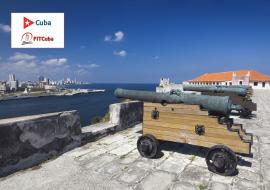Tourism Investment: The Tip of the Iceberg?

U.S. President Barack Obama’s historic Cuba visit has given both countries a once-in-a-lifetime opportunity to show the whole world and the different interest groups that change is not unilateral, but mutual consensus and adaptation.
In that sense, as many as 453,925 U.S. residents visited Cuba last year, including 292,692 Cuban-Americans. In the first two months of the ongoing year, 81,506 American citizens had traveled to the island nation, including 38,924 Cuban-Americans.
Tourism is also the industry better fit to accept foreign investment. A good case in point is the fact that 42 percent of foreign investment being poured into the Cuban economy are linked to this sector.
Prestigious U.S. hotel chains such as Hilton, Hyatt, Holiday Inn and Best Western wait for the go-ahead to cut their deals. On the other hand, American cruise companies like Carnival Cruises, Royal Caribbean, Norwegian Cruise Line, Pearl Seas Cruises and Princess Cruises have confirmed their interest in making calls in Havana and other Cuban ports.
Foreign investment in Cuban tourism is meant to foster hotel new builds and the refurbishment of international maritime facilities and seaports destined for nautical tourism, water sports, nature tourism and other services that complement tourists’ stays in travel destinations along the Cuban archipelago.
In 2014, some 15.8 million recreational boats were registered in the United States, where nautical activities take up the spare time of approximately 87.3 million people. Given its proximity to the Florida coasts, Cuba also stands for a privileged yachting destination. Over 865,000 recreational boats are registered in all the marinas and seaports of the 27 Floridian districts, including 84 percent of motorized boats and some 23,000 sailboats. Sailing opportunities for the island nation account for as many as 16,000 yachts of 46 feet long or larger.
Regulations announced recently by President Obama remove bureaucratic hurdles. However, tourism-oriented travel has not been approved yet. As a tourism modality, yachting will have a to wait until all restrictions are lifted.
President Obama’s visit to Havana with an entourage of lawmakers, political leaders and big-time businesspeople shed more light on the implementation strategies under way in Cuba in an effort to update its economic model.
In the same breath, most U.S. airlines, such as American Airlines, JetBlue Airways, Delta, Silver Airways, Southwest, Eastern, Frontier and United Airlines have said they will fly to Cuba, while travel agencies have already gotten to green light, a situation that will step up competition and make prices fall. According to the requests made by those airlines to start nonstop commercial flights to Havana, that would account for an availability in the neighborhood of 50,250 seats every week.
Foreign Investment in Cuba’s Tourism
Figures provided to Excelencias by the Cuban Ministry of Tourism show that on the heels of the new Business Opportunities Portfolio for the travel industry, further diversification and enhancement of foreign investment into that sector have occurred, with management contracts and hotel marketing featured as the most expanded area.
By the end of March 2016, 76 management and marketing contracts have been approved for 17 international hotel chains that comprise a grand total of 39,422 guestrooms –as much as 66 percent of the country’s existing rooms. On the other hand, there 27 joint ventures, with 14 of them running 5,492 rooms in four- and five-star lodgings.
The portfolio of foreign investment business opportunities for the Cuban travel industry will have 90 new investment projects that will set the groundwork to forge new international economic partnerships or pave the way for new hotel management and marketing contracts.












